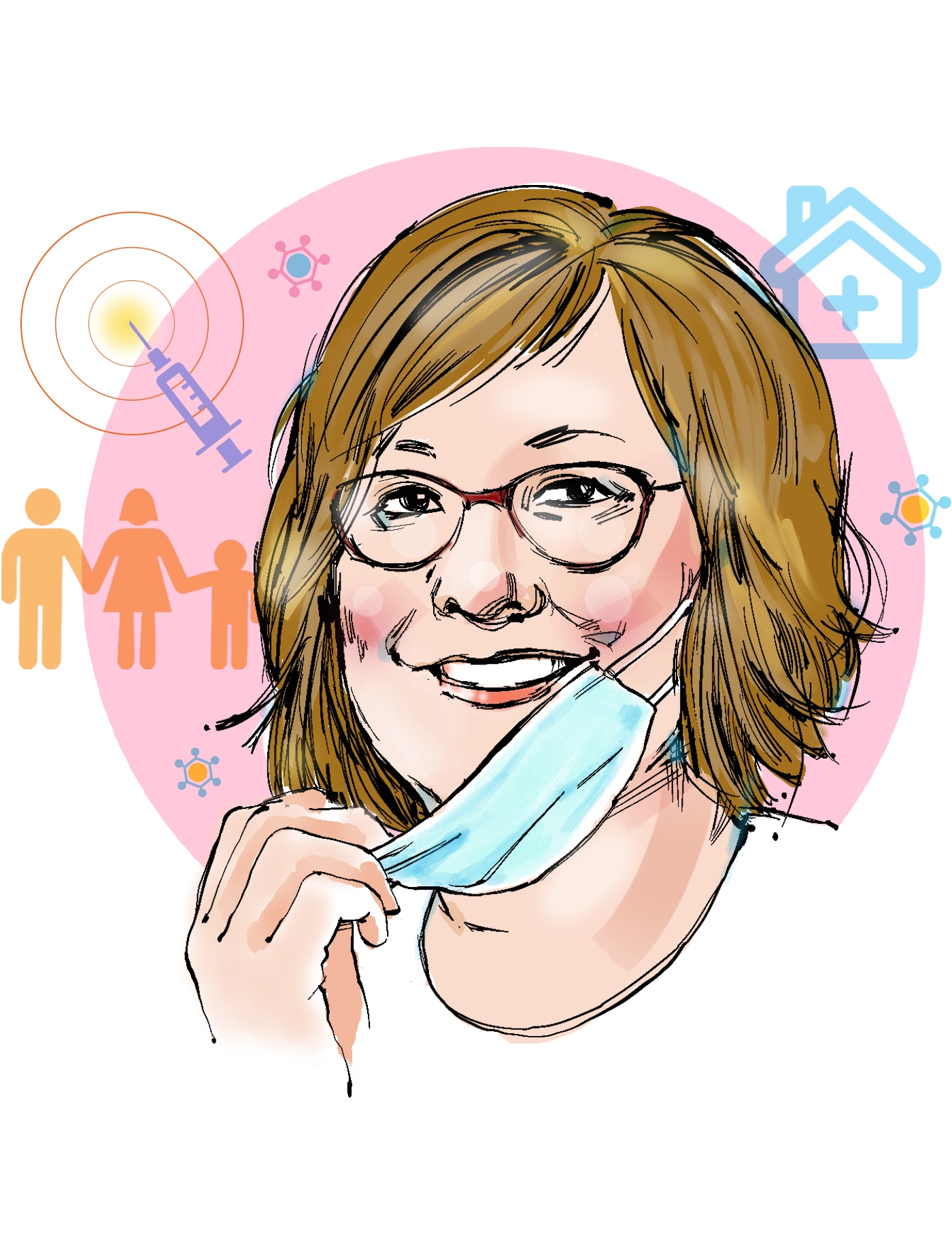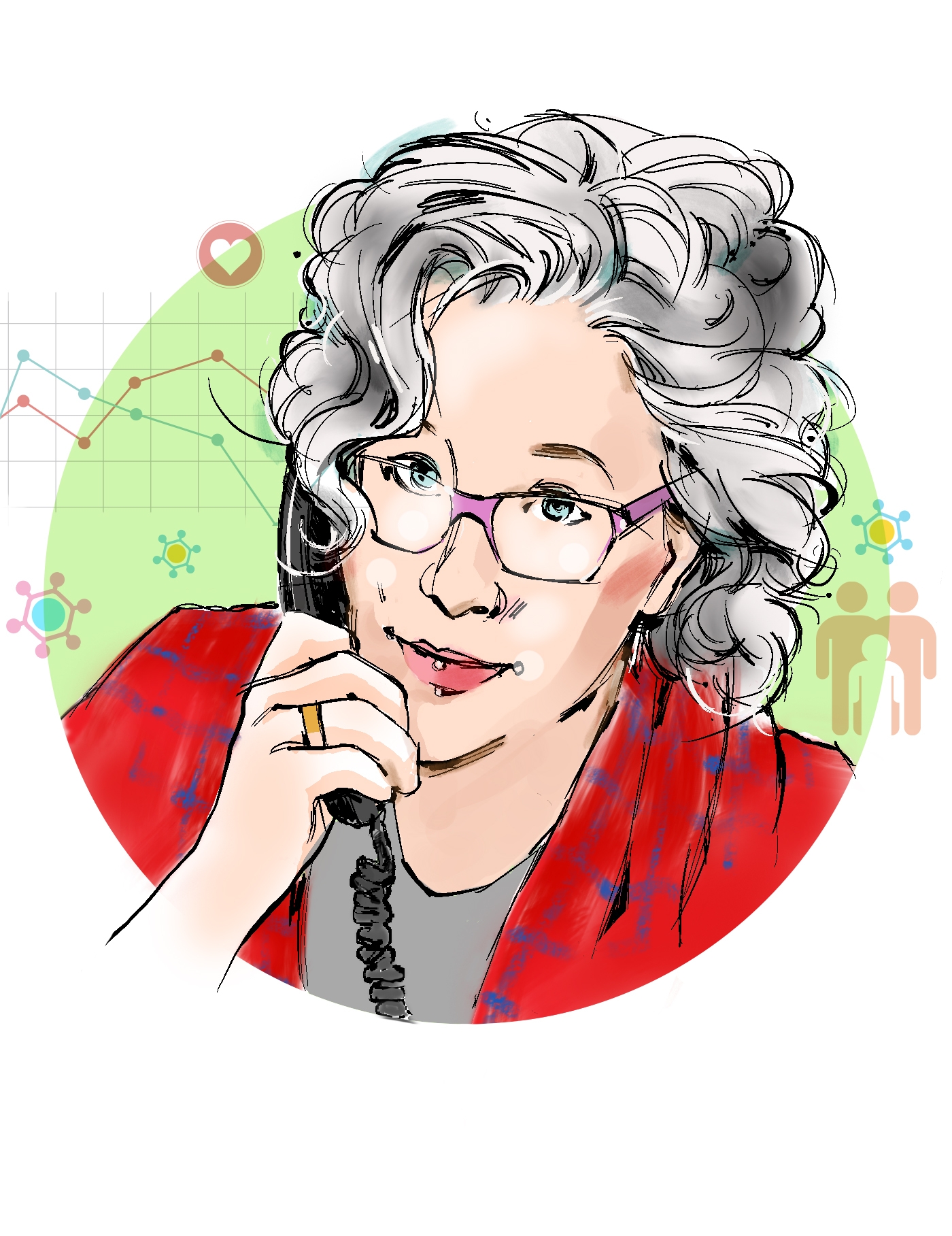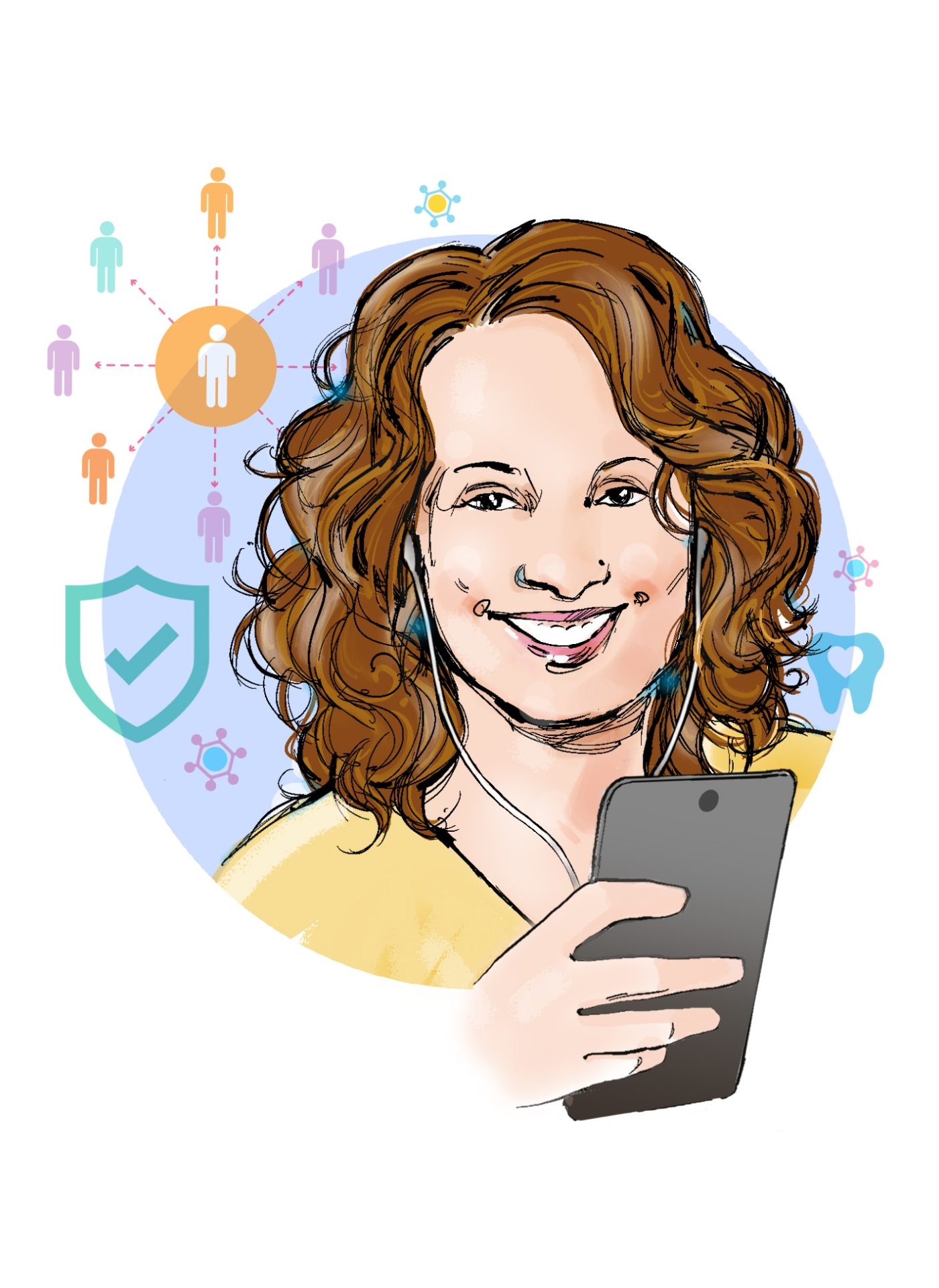Nova Scotia’s Forgotten Frontline: Public Health
This article appeared in the Spring 2021 issue of our quarterly magazine, The Union Stand:
When people think about health care, what most often springs to mind is a visit to the emergency department; a hospital stay; or even an appointment with their family doctor (if they’re lucky enough to have one). But there’s an entire area of the health care system that is always busily toiling behind the scenes, supporting and protecting Nova Scotians – Public Health.
The NSGEU proudly represents members working in this area, delivering programs under Public Health Units like Healthy Communities; Early Years Support, Healthy Beginnings; Environmental Health; Population Health Assessment and Surveillance; and Communicable Disease Prevention and Control (Health Protection).
There are a variety of occupations in this area, as well. Members include community home visitors, community outreach workers, dental hygienists, public health nutritionists, health promoters, administrative professionals, Licensed Practical Nurses (LPNs) and Registered Nurses (RNs), just to name a few.
In addition to their regular duties, public health members are often the first people tapped to help in a time of crisis. And during COVID, they’ve stepped up a big way.
ROLLING WITH THE WAVES
Holly Kennedy is a Communicable Disease Nurse working for Public Health in the Eastern Zone. She and the members of her team manage reportable diseases, such as suspected tuberculosis, animal bites (for rabies investigations), Group A Strep, HIV/Hepatitis, all sexually transmitted infections, bloodborne pathogens, salmonella and giardia.
“Every day is different!” Holly says, laughing, “You never really know which diseases are going to be coming in, and you do keep a caseload, because some of the case management is ongoing.”
Some of these cases require intense, prolonged follow-up, ensuring patients are well cared for. On top of this, Holly and her colleagues also coordinate routine immunizations for high-risk patients – those who are immunocompromised, have a chronic health condition such as liver disease, or diabetes, experience homelessness, use illicit drugs, or are 65 years or older.
This means that no two days at work are ever the same.
“It’s busy, it’s unpredictable, and it’s always challenging me,” Holly said.
She certainly didn’t predict a global pandemic would turn everyone’s lives upside down in 2020.
When COVID finally arrived in Nova Scotia in March last year, Public Health created a COVID Response Team. If you’re on that team, your only focus is on COVID: cases, follow-up, any types of requests, like exemptions, general information, and school follow-up.
Holly was one of the many Public Health members moved out of her normal duties and onto this COVID Response Team, where she acted as a Team Lead and assisted with reporting comprehensive data, ensuring accurate information was getting to Chief Meical Offiver Dr. Robert Strang for those regular updates we tune in for on a regular basis.
“When COVID started, we still only had the Communicable Disease Nurses working,” Holly recalled, “It was super challenging, because once those cases started coming in, we were like hen’s teeth trying to keep up with them, and there was no way that we could be the only ones doing the case management, especially considering the amount of detail that the Medical Officers of Health would look at.”
Other non-nursing members of Public Health, like Shannon O’Neill, were quickly brought in to help.
Shannon is a Public Health Dental Hygienist who has worked with the NSHA for 15 years now. She and her colleagues normally take the lead on oral health initiatives, such as the fluoride mouth rinse programs in elementary schools (fluoride is critical
in preventing tooth decay and cavities). They also work with nutritionists and health promoters to develop oral health messages for the public, connect with Early Years team members to develop oral health messaging for young children and assist with content for school newsletters.
All that work has been put on hold as these members have been redeployed to the COVID Response Team.
Shannon was initially assigned to the negative labs component, which means she was calling clients to advise them of their negative COVID-19 results: “That was incredibly meaningful work because you have to remember that at that time, there were so many people that were isolated,” Shannon noted, “And even though a negative lab result is a quick conversation, you have the opportunity to connect with the public and give them some really good news.”
“I think we kept the public trust. Informing clients in a timely way about their negative COVID status built the public trust for Nova Scotians to continue to get tested – is one piece of it. I think that, to me, that was very meaningful.”
Shannon was made one of the Team Leads for negative labs. In that role, it was to support staff who were calling clients to inform them of their negative test results and they would defer more unique situations that needed a bit of extra support. They also give input for improving processes and help edit scripts to ensure clients received consistent messaging.
Shannon is no stranger to leadership roles. She is the Past Chair of the College of Dental Hygienists of Nova Scotia, and in 2017, she represented the Canadian Dental Hygienists Association as one of four hygienists selected to attend International Dental Hygiene Federation Strategy Session. She also helped established an oral health assessment clinic for Syrian newcomers on behalf of the College of Dental Hygienists of Nova Scotia, and spent a year worki
ng as a health promoter in Public Health, after taking her graduate certificate in Public Health.
But being on the COVID Response Team is the first time she’s had an opportunity to take on a Team Lead role with her employer.
“So dental hygienists in NSHA showed up in leadership roles that they hadn’t had very much opportunity (to take on these roles before). It just never came up for those types of opportunities in the past, so that was really important to the profession, I think, just to demonstrate those core competencies.”
Both Holly and Shannon say the experience has been rewarding in many ways.
“It feels good, on one level. It feels interesting to know that you’re kind of making history, almost. You were on the frontlines – well, second lines, I’d say! We don’t work directly (with patients), but we’re the ones that are calling the cases, we’re the ones that are listening to them cry, we’re the ones that are completing their contract tracing and trying to make sure it doesn’t spread throughout the province,” Holly paused.
“I had this conversation before with a couple of my coworkers: … the ‘frontline’ designation kind of gets lost of us, because we don’t have patient contact – like direct, hands-on contact – but yet we’re the ones that are protecting the hospitals. We’re the ones that are protecting the people. And I find that kind of gets lost sometimes.”
Being part of the provincial COVID team has also allowed members of Public Health to work with other professionals outside of their team and geographic area.
“If there was one thing that I could say was a really positive thing that I loved from this experience would be getting to know everybody in health protection across the province … I really enjoyed my team and I really enjoyed the people that I met,” Holly said.
The work hasn’t been without its challenges, though.
“The work was severely frustrating and the public response and the tooth-and-claw that you had to fight with in order to get some people to isolate or to contact trace, that stuff was hard,” she added.
Another frustrating aspect of their work has been seeing misinformation posted online about COVID cases in their community, and general information about the pandemic. Health care workers have to be very careful about what they post online – even if it is just to correct inaccuracies. In most cases, they just have to ignore posts by anti-maskers, science deniers and people who unwittingly share articles from disreputable sources.
“If there was one message that I could give to people is that this is not fake,” Holly said, “This is not the government trying to control you, this is real, and your health is important. It’s not about the percentages of people that are going to pass away … there are people who have long-standing illnesses because of COVID … that never fully recover. Every single person who passes away from COVID is somebody’s mom or dad or relative of some sort: people look at it from a very individualistic view when, in reality, we should be looking at it from a community lens.”
SHIFTING FROM RESPONSE TO RECOVERY
Angie Chasse-Naugler has been a Licensed Practical Nurse (LPN) for around 20 years, and has spent 12 years of her nursing career with Public Health, where she helps run the school immunization program and the enhanced vision screening program for the Western Region (Lunenburg and Queens County). Her team oversees the planning and implementation of the grade seven immunization program, immunizing young Nova Scotians against meningitis (meningococcal quadrivalent vaccine), hepatitis B, HPV, and tetanus.
Of course, that was pre-COVID.
Since the pandemic began, Angie has had her work duties and hours changed more than a few times. Like Shannon and Holly, she was initially helping with doing negative lab calls, phoning hundreds of Nova Scotians each day.
“When a client went and had a swab done and they came back negative, we would call them and provide advisement on what to do for self-monitoring, and things like that,” Angie explained, “That quickly moved into daily monitoring calls: so it could be a client that was a close contact to a positive case and we would give them a call to see if they had had any symptoms develop, and if they did, we’d be booking them in for another COVID assessment to see if now they’d become positive.”
Her most recent job, however, is the most hopeful one: she is helping set up COVID immunization clinics, eagerly awaiting the delivery of vaccines each week.
“Our role now is trying to get these (COVID) clinics up and running with management, so the LPNs and some of the RNs are clinic leads at the COVID-19 clinics, so that is going on-site and working with the engineer to have clinic flow set up, working with the site lead with infection control, occupational health to make sure these clinics meet all of the standards and then we get those up and going by getting the appointments for phase zero clients,” Angie explained.
Shannon and other Dental Hygienists have also been shifted into the immunization clinics, working in the recovery area to monitor clients once they have received their dose to ensure they don’t have an adverse reaction (this is standard practice after receiving any vaccine, including the annual flu shot). Dental Hygienists were a natural fit for this role because they are required to renew their health care provider CPR certification annually.
So, Shannon found herself working at the very first vaccination clinic for health care workers back in December.
“It was a real honour to be there at that first vaccine clinic, to see the health care providers receive their vaccine,” Shannon recalled, “They’ve been working so hard to take care of the public during this time, that it just felt like an honour to be there to help.”
It’s also given some optimism to health care workers, who are exhausted from working through a pandemic for the past year.
“At our first clinic that we stood up at Valley Regional Hospital, when we had that first huddle and we realized what we were about to do, there was a lot of camaraderie there. There was a lot of emotion, because we thought, ‘could we be actually now seeing the light at the end of this tunnel?’” Angie said.
“We’re all tired, but we’re all very excited that we’re actually finally getting needles into arms.”
A TEAM EFFORT
Regardless of these struggles, Public Health members are quick to credit others for the important role they have played in helping keep Nova Scotians safe during this time.
“The community has really come together and we’ve all understood the importance of how we need to protect one another,” Angie said.
Because of that, Angie and her colleagues have been able to continue some of the important “normal” work that they normally do. In fact, Angie points out that Nova Scotia was one of the only provinces in the country that was able to hold our school immunization clinics, because our case numbers were so low.
“I’m just proud that we’re all taking this seriously and we’re all looking out for one another … when you’re hearing those ‘travel-related’ (cases), they are self-isolating and trying to keep everyone safe. I’m just proud to be a Nova Scotian right now – I think a lot of us are.”
Angie attributes much of our success to the leadership of Dr. Strang and the work of her colleagues in Public Health, who ran with the processes developed by the Chief Medical Officer, doing daily check-ins and close monitoring of people.
“I think just as Nova Scotians, we’ve been through so much in the past year. I mean, we had a lot of tragedy and loss. In that, I just feel like Nova Scotia has been brought closer together, so now we’re more protective and more supportive of one another, now more than ever.”
Despite the chaos of the past year, Shannon is proud to have been a part of Nova Scotia’s pandemic response and recovery: “It’s all meaningful to me because I know I’m doing my part to combat COVID-19 and protect the health of the public. This is my job, to brighten up the future again.”
CARING FOR THE CAREGIVERS
This certainly isn’t the first time we’ve called on our Public Health members to step into the void during a health emergency: they have also been on the front lines during H1N1, SARS, mumps and other outbreaks.
“You do the work that’s focused around your profession, as it relates to Public Health, but then there’s always an expectation that if there’s an outbreak or different work, then you move into supporting that. So you have to be flexible … that’s part of the way we work,” Shannon explained.
But the severity and scale of the COVID-19 pandemic have resulted in an all-hands-on-deck response that has lasted for more than 12 months now, and it is taking its toll on these workers.
Holly worked in acute care, mental health & addictions, and even did a stint in Continuing Care before coming to working for Public Health about two years ago. While she enjoys the unpredictable and independent nature of her role as a Communication Disease Nurse, she isn’t sure how much longer she will be able to stay in this role.
She was shifted back to her pre-COVID role back in November. Since then, the workload has become unbearable, and even though the employer added another person to her team, four coworkers are off, either on leaves or redeployed to another area.
The situation on Holly’s team is not uncommon within Public Health right now. All over the province, NSGEU members who work in Public Health are reporting astronomical amounts of overtime, frequent changes to their schedules and shifts, cancelled vacations and more. It all has added up to mounting stress and burnout for these workers.
There are simply not enough people to do the work.
As a result, sick leave and STI rates have risen drastically.
All of these factors clearly demonstrate the need for an increased capacity in the sector.
While Public Health has hired 100 new nurses, plus more administrative professionals, to help with our COVID response, these are temporary positions, and many of the successful applicants are internal hires from acute care within NSHA. In many cases, these members aren’t being released from their current assignments for months, because their area in acute care is already so short-staffed.
Still, members like Angie are hopeful that now that Public Health has been pushed into the spotlight because of COVID, government may finally start funding this area of the health care system appropriately.
Despite the broad scope and significance of the work they do to keep the public safe, Public Health receives less than one per cent of the overall budget from the Department of Health and Wellness.
In fact, a paper was recently published in the Canadian Journal of Public Health, pointing out that the one per cent of funding Public Health receives here in Nova Scotia is well below the five to six per cent of health care funding that is recommended. Furthermore, the report found the last time our Public Health budget met the recommended funding levels was in 1975.
“More money and resources need to be put into Public Health so we can continue to manage things like this, because unfortunately – we hope this never happens again – but we can’t say for certain that it won’t, so we need to be more prepared, absolutely,” Angie said.
“I am so thankful that NSGEU has taken on this government and taken them to task, because this government needs to be taken to task. We have suffered in health care under this government, that’s how I feel.”
The NSGEU has already filed grievances on behalf of the members in Public Health over the past year, hoping to alleviate some of the stresses they’ve been experiencing.
One thing is certain: heading into bargaining, COVID has helped the union identify a variety of issues that need to be addressed urgently. And we will be bringing these issues to the bargaining table







